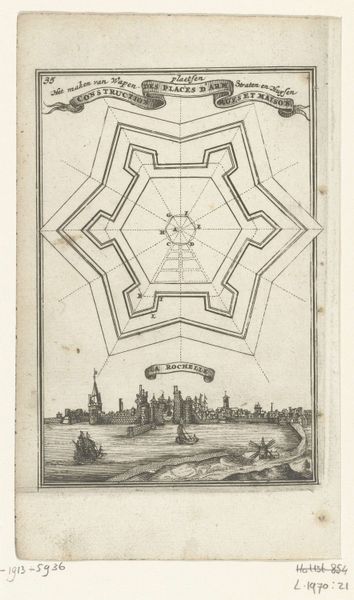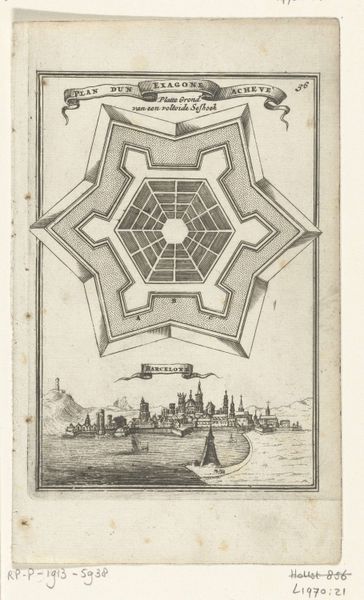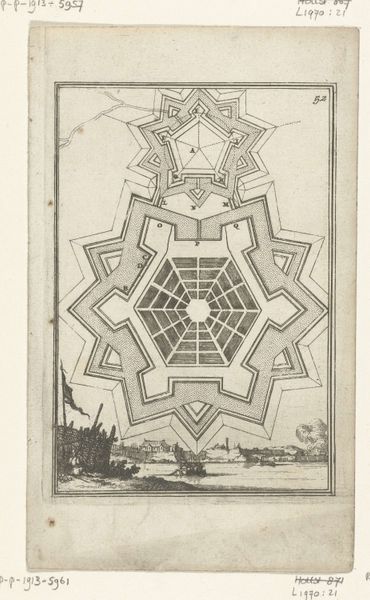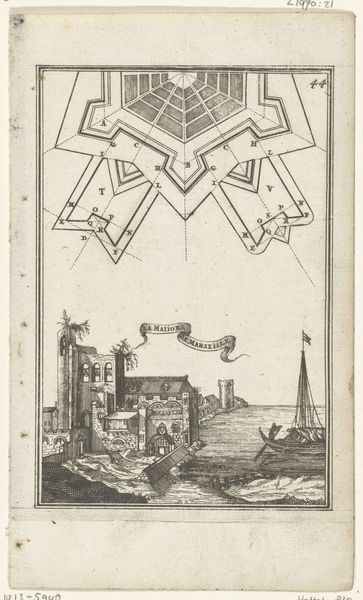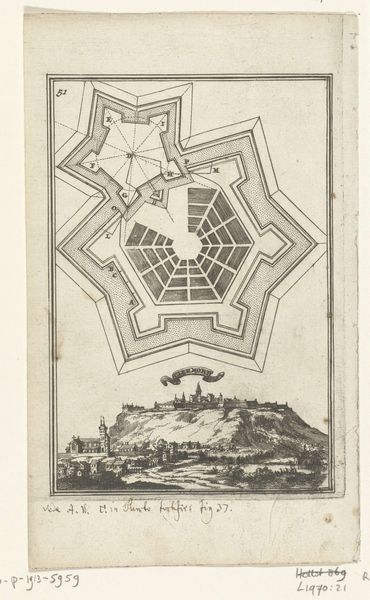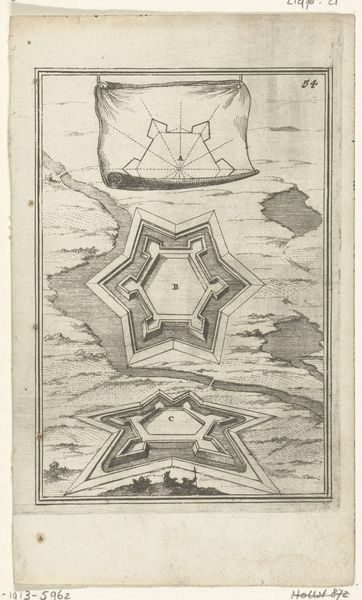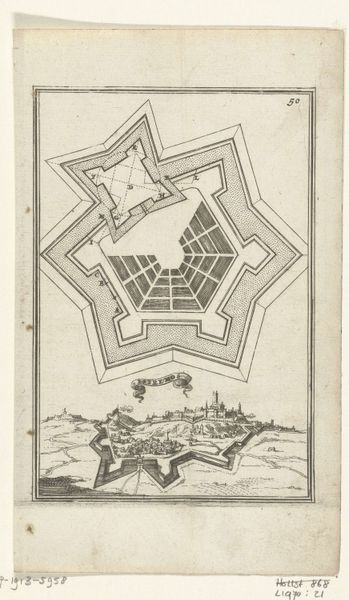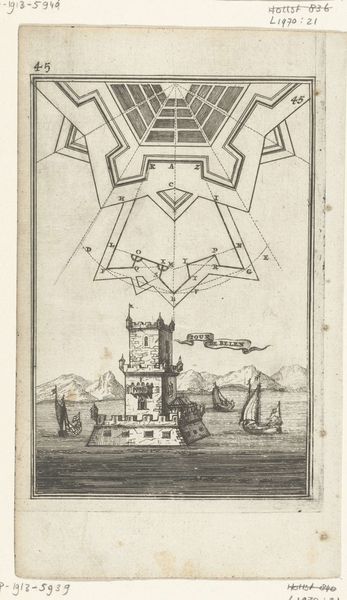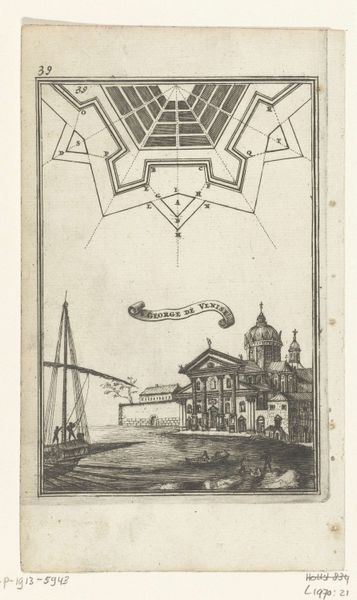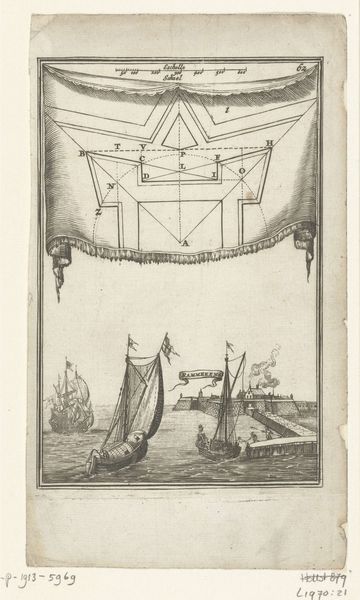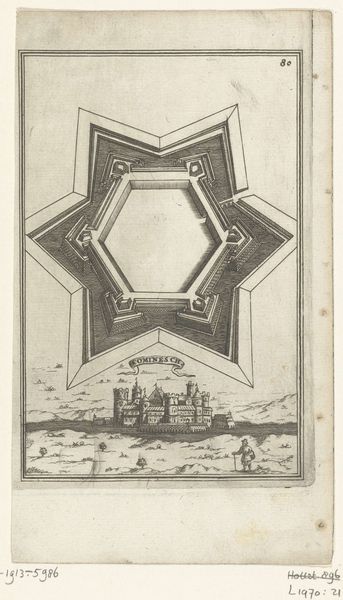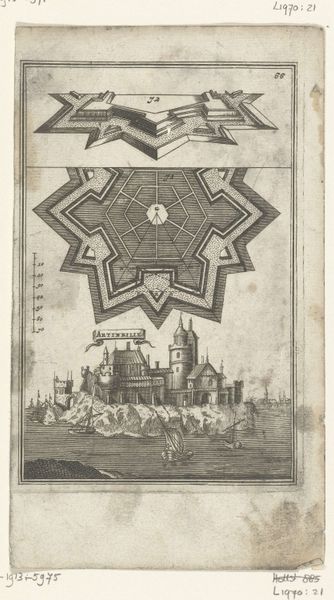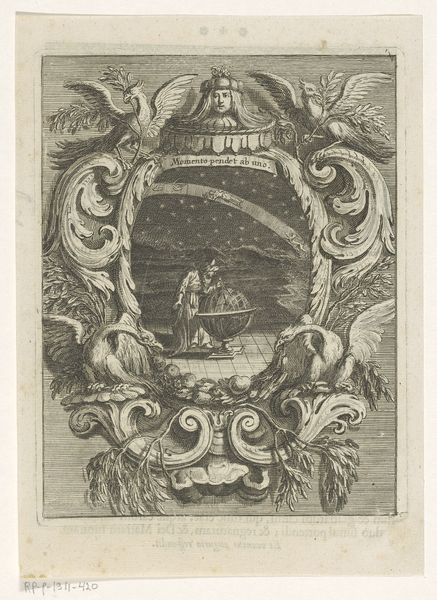
Illustratie voor 'Den Arbeid van Mars' van Allain Manesson Mallet 1672
0:00
0:00
drawing, print, pen, engraving, architecture
#
drawing
#
aged paper
#
baroque
#
dutch-golden-age
# print
#
old engraving style
#
geometric
#
pen-ink sketch
#
line
#
pen
#
cityscape
#
engraving
#
architecture
Dimensions: height 185 mm, width 111 mm
Copyright: Rijks Museum: Open Domain
Curator: Looking at this work, I'm struck by its graphic clarity. The sharp lines and geometric shapes create an almost abstract quality despite its representational nature. Editor: This is "Illustratie voor 'Den Arbeid van Mars' van Allain Manesson Mallet" (Illustration for 'The Work of Mars' by Allain Manesson Mallet), dating back to 1672. It's currently held at the Rijksmuseum and was created by Romeyn de Hooghe using pen, ink, and engraving techniques. What you're seeing is essentially a plan of a fortified city. Curator: Right, the city plan, but what is worth noting is the clear separation of that structured fortification above and the landscape below. It emphasizes power, control. Consider who had access to and could disseminate such architectural and military knowledge at that moment? How did the controlled circulation of such imagery influence societal power dynamics and access to material and geographical resources at the time? Editor: Indeed. Publications like Mallet’s, which de Hooghe contributed to, were instrumental in shaping military strategy and public perception of warfare. The engraving makes architectural ingenuity itself a display of power, and the very name of this illustration clearly associates construction with masculine control and violent conquest. Notice the deliberate, calculated nature of the lines. It conveys a sense of precision, reflecting the evolving science of military engineering during the Baroque period. Curator: Precisely, that connection is impossible to ignore. There is certainly an attempt to sanitize violence. When war and "construction" are considered through gender and coloniality, a much less palatable historical narrative takes form that many are, in fact, still dealing with to this day. Editor: By understanding the social history embedded within its lines, we start to recognize this work's multifaceted commentary about Dutch society's engagement with defense strategies, overseas trade, and global positioning. It underscores the ways these systems affected populations near and far. Curator: And through close attention to detail and the context of such graphic precision, we have highlighted key ways this rather unassuming rendering engages in and bolsters certain societal systems. Editor: Yes, that delicate balance of control, power, and even vulnerability within a period of expansion and military reform.
Comments
No comments
Be the first to comment and join the conversation on the ultimate creative platform.
